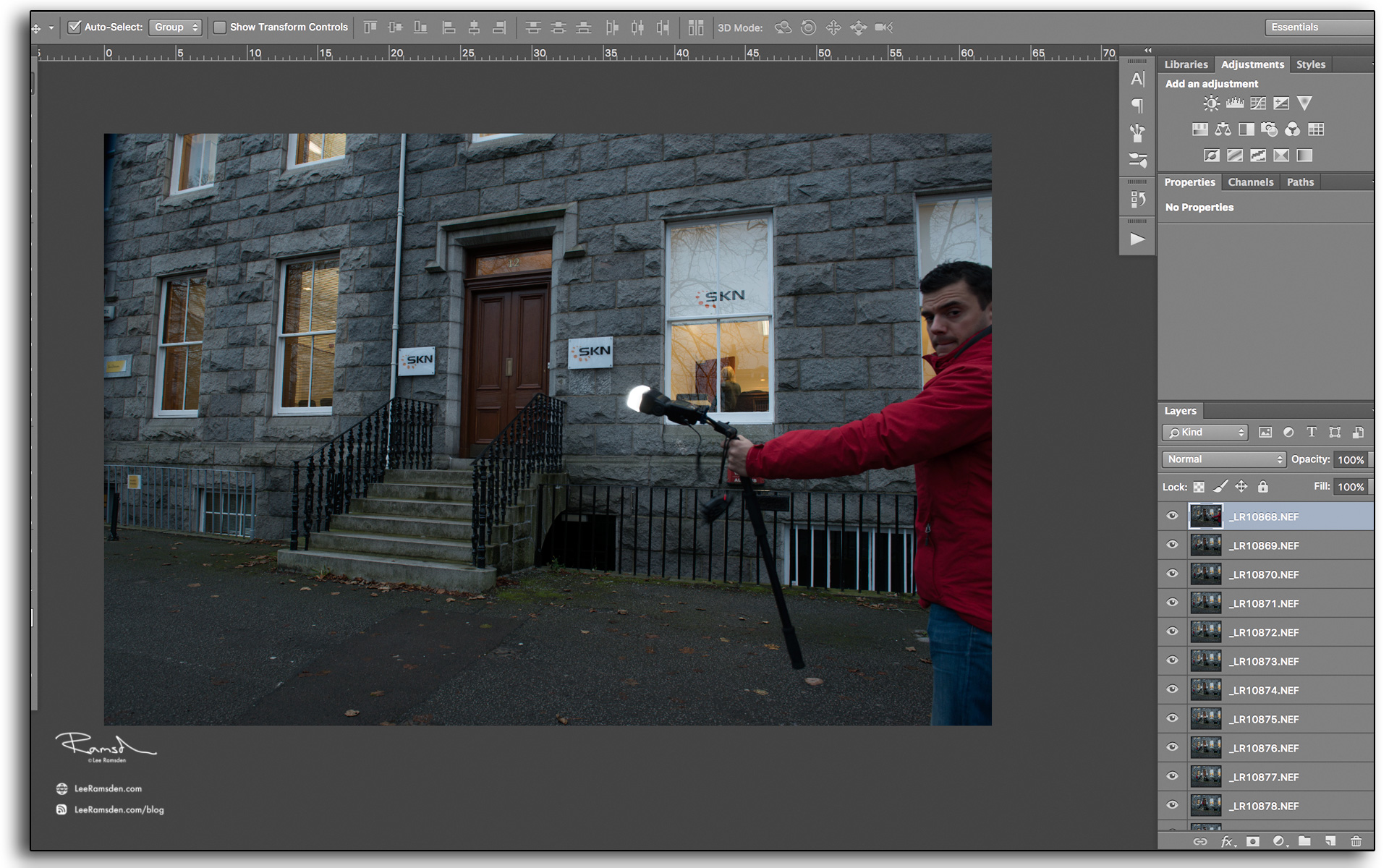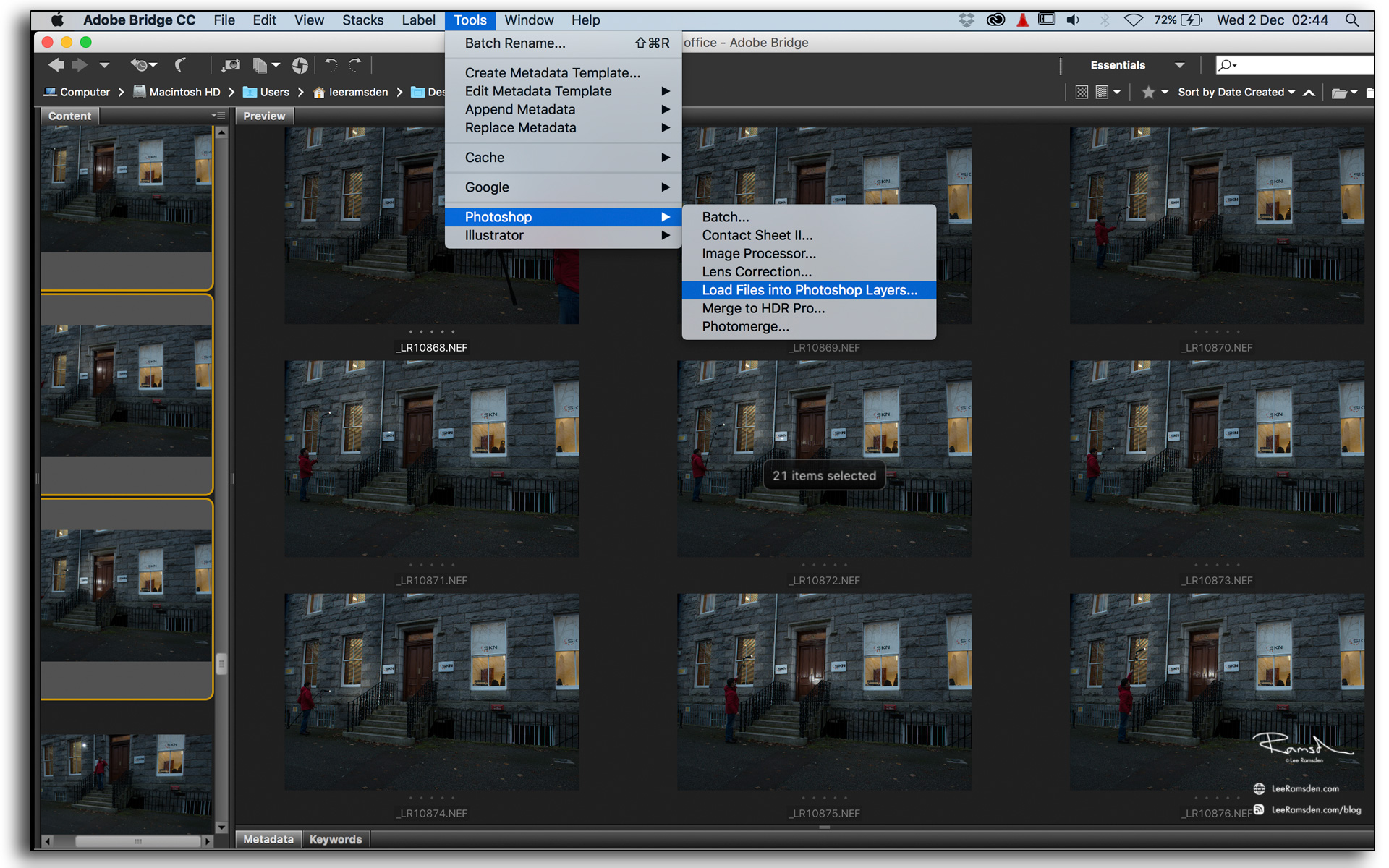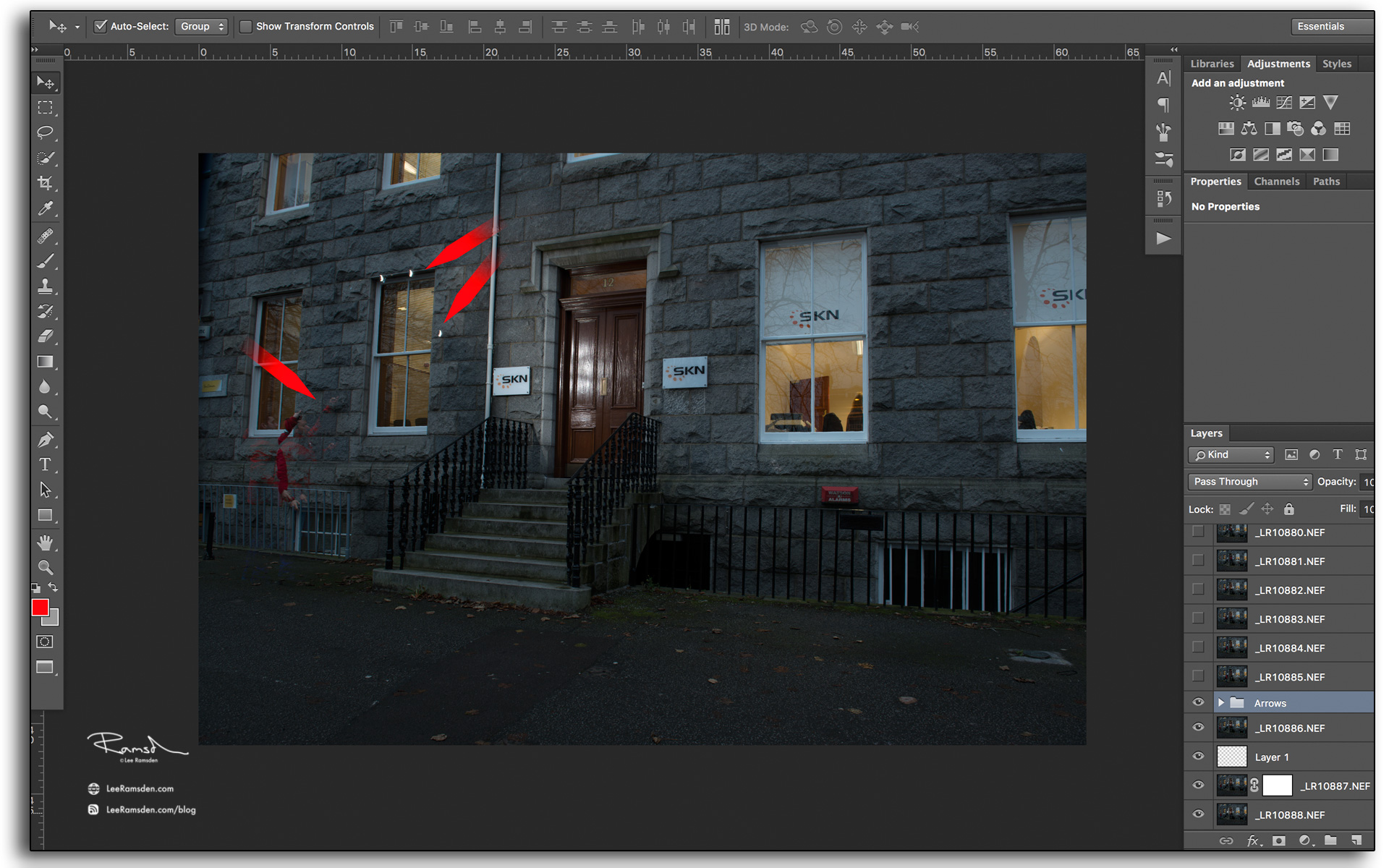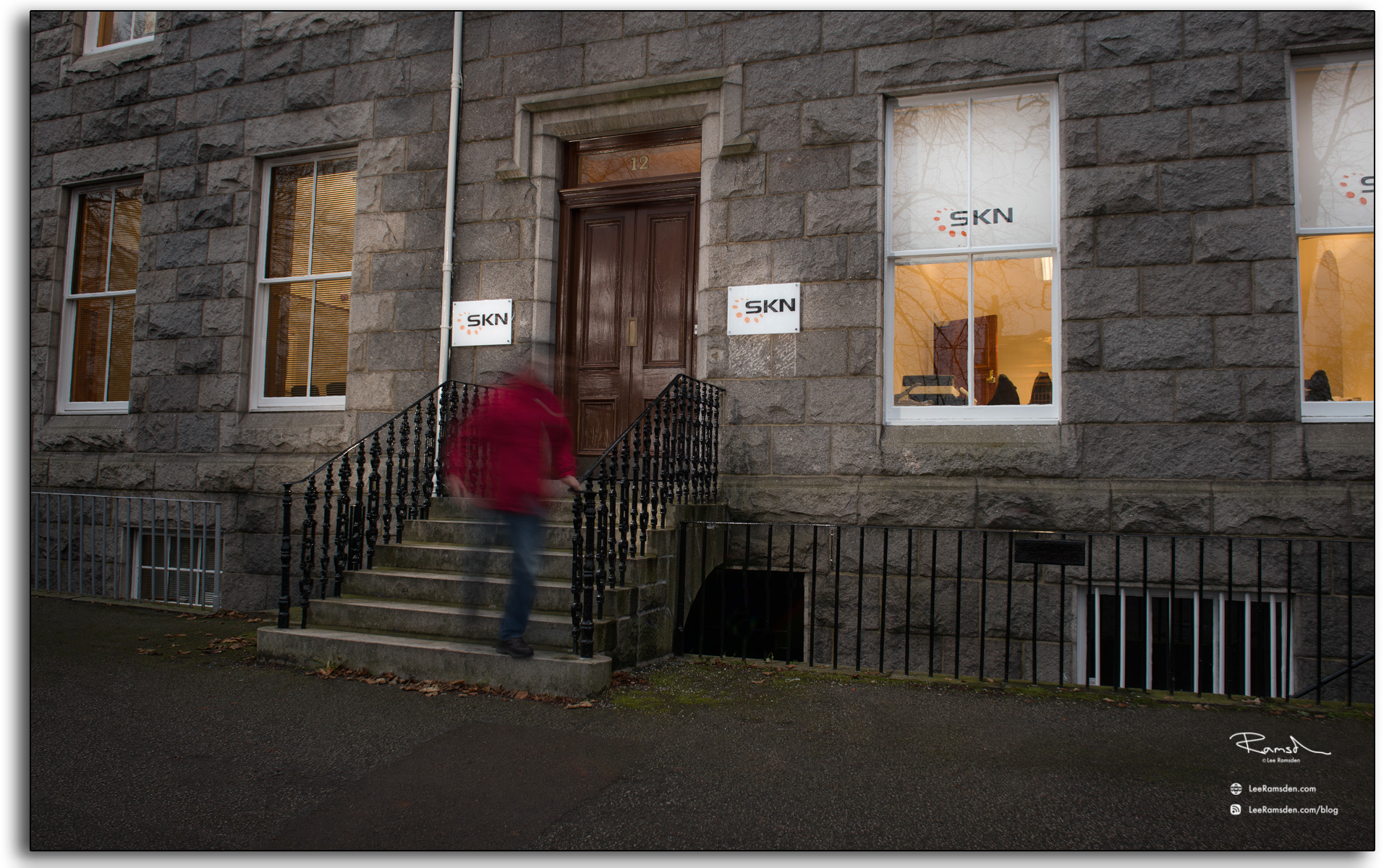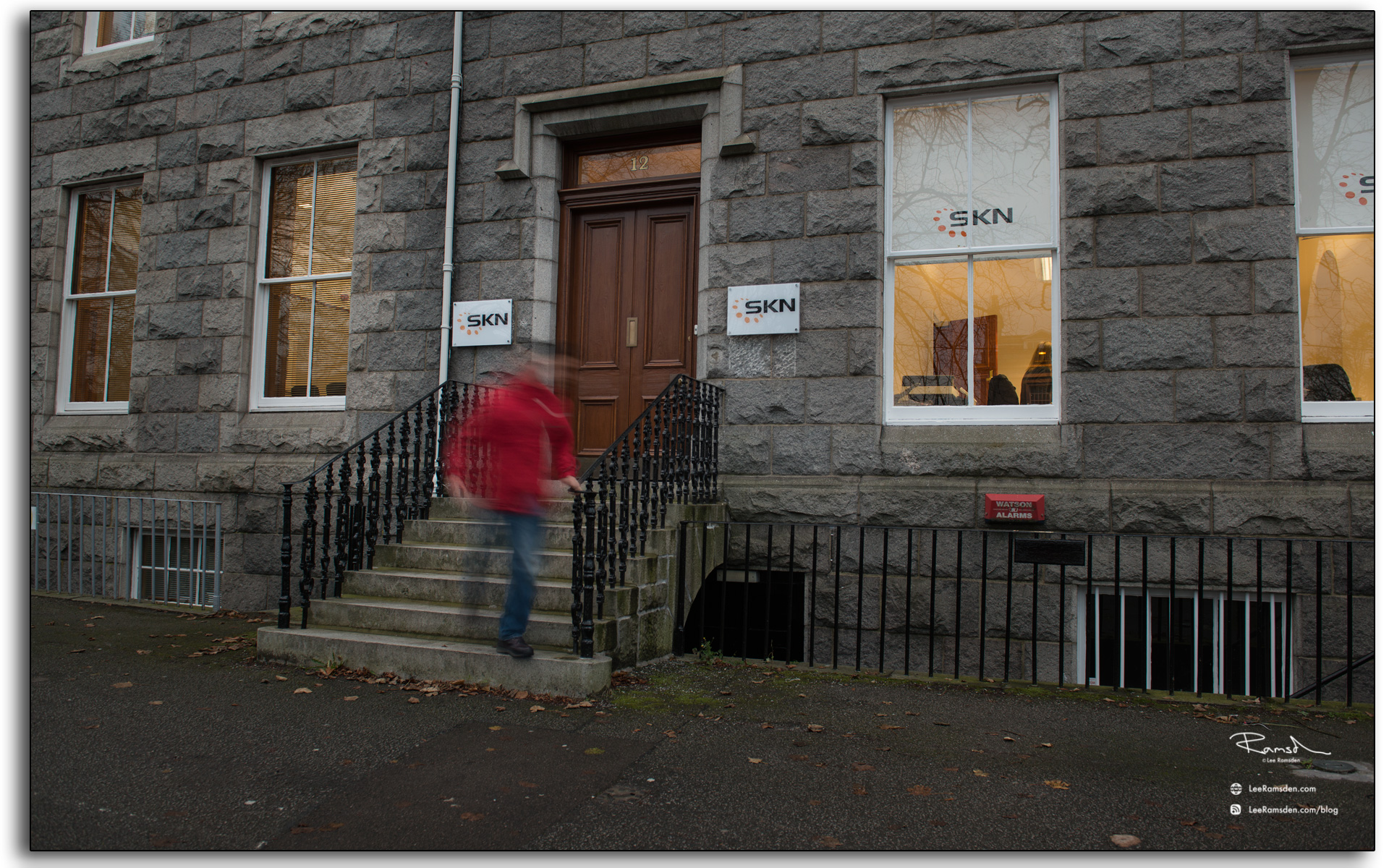Good morning, i hope that you are well.
Today i'd like to share a quick thought on how you can use image stitching to over come problems.
I appreciate that this is nothing new, but with some fore-thought it can become a powerful tool in your arsenal.
I was commissioned to shoot an office building. The front had no access due to very limited space and parked cars in my way. Even with the lens at 24mm it was simply impossible to fit the building into frame. So stitching is the only way forward.
The above image was created with around 25 images.
Here you can see the images used,
the camera was mounted on a tripod and i systematically panned left to right making sure to over lap alot. The building took 3 passes.
Always best to have more frames than needed, than have pieces missing down the line.
With each up date of Photoshop CC i have noticed that it is becoming much better at stitching.
In the past it would have not been able to do this, and for these cases i use Autopano Giga 3.0 stitching software, but photoshop managed ok with this.
Now by using a tilt shift lens, and/or a parallax tripod head, your job in post will be so much easier, but as i do not own either of these i had to make do. The majority of my time was spent straightening the stitched image.
As with all panos, shoot in manual, turn white balance off auto so all the images remain consistent.
I hope that this helps, and when you are trying to shoot a subject larger than your frame, that you remember this technique.
Thanks
Lee


